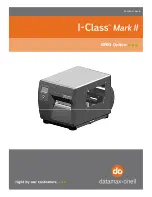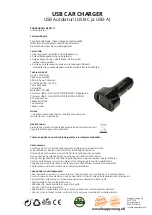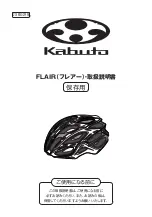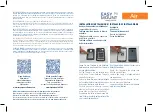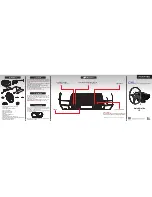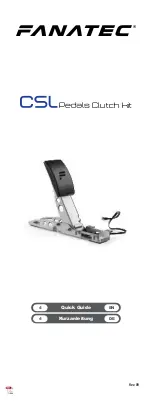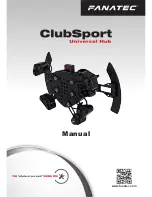
3. Be careful not to over-tighten or over-loosen the adjustment bolt. Overtightening may strip the threads,
while over-loosening may cause the bolt to fall out of the adjustment plate.
4. IMPORTANT: Binding tension settings should be equal for both pedals to ensure uniform entry and
release. Therefore, if you make an adjustment to the tension setting for one pedal, you should make the
same adjustment to the other.
PEDAL USE:
1. Before attempting to engage cleated shoes into the pedals always check cleats and pedals for any debris
such as dirt or stones.
2. Engage cleated shoes in pedals by stepping down on top of the pedal with the toe pointed slightly
downward. Slide the forward end of the cleat under the lip at the front end of the pedal. Then step down
firmly with your heel to engage the cleat in the rear pedal binding (see Figure 4).
3. As the cleat engages, you should hear a “CLICK,” and should be able to pull your foot up firmly without
releasing from the pedal. If engagement is difficult, reduce the binding tension on both pedals,
and test again.
4. Release by twisting the heel away from the bicycle until the cleat releases from the pedal (see Figure 5).
If release is difficult, reduce the binding tension on both pedals, and test again.
PEDAL MAINTENANCE:
1. To function properly, pedals and cleats must be kept clean.
2. Occasional lubrication of cleat bolts will facilitate future removal.
3. Oil or light grease should be applied occasionally to binding springs.
4. Periodically check cleats for wear. Cleats that are badly worn may impair release or cause unexpected
release from the pedals, and should be replaced.
5. Pedals should be maintained and inspected regularly. Before each ride, and particularly after a crash
or impact, inspect the pedal axle and body for dents, bends, deep scratches, cracks or gouges. If any
damage is visible, do not use the bicycle until the pedal has been replaced.
6. As with any component under stress, pedals have a limited fatigue life and must be replaced periodically.
A component’s useable life depends on the frequency and severity of use and can be reduced by many
factors. The more stress factors a component is subjected to, the shorter its life. Inspect your pedals
on a regular basis or have a qualified bicycle mechanic do so to determine the need for service or
replacement. If you have any doubts about the integrity of the pedals, REPLACE THEM.
Ride safely and enjoy your Nashbar
™
Alpe D’Huez Road Pedal!
Fig 4
Fig 5
Minimum binding tension settings are recommended for novice riders and for riders in situations
requiring frequent cleat release, such as on difficult terrain or in heavy traffic.
WARNING
For Technical support, call 1-800-888-2710
0113_1 NB-ALPE Made in Taiwan



